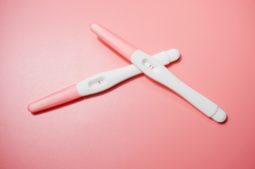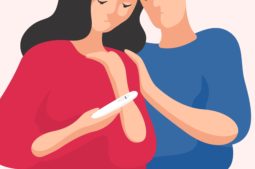

Fibroids are non-cancerous uterine growths that can develop in or on the womb. They can vary from being pea-sized or as large as a grapefruit and there could be just a few or multiple fibroids. They are also surprisingly common. It is estimated by the NHS that a third of women will develop fibroids at some point in their lives, most often between the ages of 30 and 50. Happily, the vast majority of these women either don’t know they have the condition because they have no fibroids symptoms or, if they do know, the fibroids are minor enough not to need any treatment.
In this article, we focus on the causes and symptoms of fibroids, how they may impact on fertility and how they can affect pregnancy. We also touch briefly on the range of treatments available for cases where this is necessary.
What causes fibroids and what are the symptoms?
Although the exact cause is not known, it is likely that fibroids are associated with high levels of oestrogen. This is why they most commonly occur during a woman’s fertile years, between puberty and menopause. It is during these years that levels of oestrogen are at their peak. Conversely, they tend to shrink after menopause, when oestrogen levels decline. Women who are overweight or obese are more likely to have fibroids, because their oestrogen levels are usually higher than normal. Although in approximately two out of three cases of fibroids there are no symptoms, when symptoms do occur they can include:
- Abdominal or lower back pain,
- Periods that are irregular, heavier or more painful than usually
- Constipation or a need for frequent urination,
- Discomfort or pain during sex
If any of these symptoms persist, you should see your GP. A referral for a scan or other diagnostic investigation can help to determine whether fibroids are causing the problems and if so, what action should be taken. If, on the other hand, there are no symptoms of fibroids, it is quite common for them to be discovered by chance, during the course of a routine scan or gynaecological examination.
Do fibroids cause infertility?
Fibroids in or around the womb can, in some cases, cause difficulties with fertility. This is not common, but when they do it is usually because they prevent a fertilised egg from attaching itself to the womb lining, or because they cause the physical blockage of a fallopian tube. The type and location of the fibroids are critical in whether they impact on fertility. The British Medical Journal reports that there is no reduction in fertility for women with subserosal fibroids (i.e. those growing on the outside of the uterus) but women with submucosal fibroids (a more uncommon form in which fibroids develop inside or very close to the uterine cavity) do experience decreased fertility as well as a higher chance of miscarriage.
However, most women who have been diagnosed with fibroids have no problem with going on to have a normal pregnancy. Fibroids can quite often develop during pregnancy due to the increased levels of oestrogen, especially during the first trimester. In the majority of cases these do not cause any problems, and generally shrink again after childbirth.
How do fibroids affect pregnancy?
Even though the presence of fibroids will not necessarily have an adverse effect on your pregnancy, you should still make sure that your health and that of the foetus are monitored regularly. When fibroids during pregnancy do cause problems, these can include:
Abdominal pain and the possibility of premature labour.
- The need for birth by caesarean section in cases where large fibroids have blocked the vaginal canal. A C-section could also be necessary as a result of the fibroids preventing the uterus from contracting properly, thereby slowing down the progress of the labour. There is also an increased chance of a breech birth, in which the feet or bottom appear first, rather than the head.
- In some rare cases, fibroids can cause a miscarriage during the first trimester.
- Bleeding and pain are more likely during the first trimester for women who have fibroids.
- During the second and third trimesters, the most likely problems caused by fibroids include pain, especially if the fibroids are large, and the danger of placental abruption. This is a serious condition in which the placenta becomes detached from the wall of the uterus before the baby is due to be born.
- On a more cheerful note, fibroids usually shrink following the delivery. For most women they shrink by around 50% within three to six months of giving birth.
How can fibroids be treated?
There are several different types of treatment and the one recommended by your doctor will depend on a number of factors including your age, your general health and the size and location of the fibroids. Treatments can include:
- Medication to manage the symptoms of the fibroids (such as Gonadotropin-releasing hormone (GnRH) agonists which lower levels of oestrogen and progesterone)
- Surgery, known as a myomectomy, may be carried out to remove the fibroids. This could be performed either using traditional surgical methods or laparoscopically, where camera-guided instruments require only small incisions and the recovery time is quicker.
- Relatively new minimally invasive procedures use ultrasound, laser or freezing to remove or reduce the size of fibroids fibroids.
How can IVI help?
If you have any cause for concern about your fertility, it’s a good idea to consult your GP or a fertility specialist sooner rather than later. Fibroids are just one of many conditions that could be causing difficulties; have a look at our blog article on the most common causes of infertility for the wider picture. You could also browse our website which sets out a comprehensive range of the tests, treatments and services available, or simply go ahead and get in touch using our online contact form.
Do remember that in most cases the presence of fibroids does not constitute a sentence of infertility, and that in all likelihood there is a solution to the problem.





Comments are closed here.